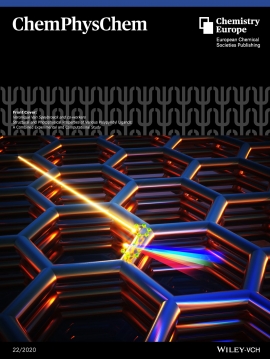On the Prediction of Spectroscopic Fingerprints of Co2+ Complexes Relevant for the ZIF Nucleation Process
Abstract
The nucleation process of zeolitic imidazolate frameworks (ZIFs) is to date not completely understood. Recently, it has been found that, during the formation of Co-ZIF-67, after mixing imidazole-type ligands with octahedral precursors containing oxygen-coordinated ligands, a metal–organic pool with a diversity of transition metal complexes (TMCs) is formed showing fingerprints of octahedral and tetrahedral Co2+ complexes with both types of ligands [Filez, M. Cell Rep. Phys. Sci. 2021, 2, 100680]. In order to further unravel this process, we aim to characterize the d–d transitions of the TMCs and focus on their number, intensity, and position, which change during the process and can thus serve as a fingerprint for the formed species. It was previously shown that the number of ligands and symmetry has a detrimental influence on the ground state properties of Co2+ TMCs. Herein, we investigate how far excited state properties of TMCs relevant during nanoporous formation processes can be predicted by time-dependent density functional theory (TDDFT) and ligand field density functional theory (LFDFT). As TMCs are known to be challenging systems with possibly degenerate ground states and double excitations, we first investigate the performance of both techniques on first-row octahedral aqua-complexes. With this knowledge, we then focus on tetrahedral Co2+ complexes with aqua and imidazole-type ligands in order to investigate in how far we can propose a spectroscopic fingerprint that allows us to follow the Co2+ complexes during the formation of Co-ZIF-67. The results of TDDFT and LFDFT are qualitatively in agreement and provide complementary information. We found that various features can be used to distinguish between the species. However, as LFDFT is not suited for TMCs possessing the extended imidazole-type ligands and double and spin-flip states are not included in TDDFT, both techniques need to be complemented with more advanced methods to obtain complete insight into the d–d excitations of TMCs with imidazole ligands. Therefore, we particularly explored ab initio ligand field theory, which is capable of describing double excitations and is, in contrast to LFDFT, suitable for TMCs with extended ligands.

